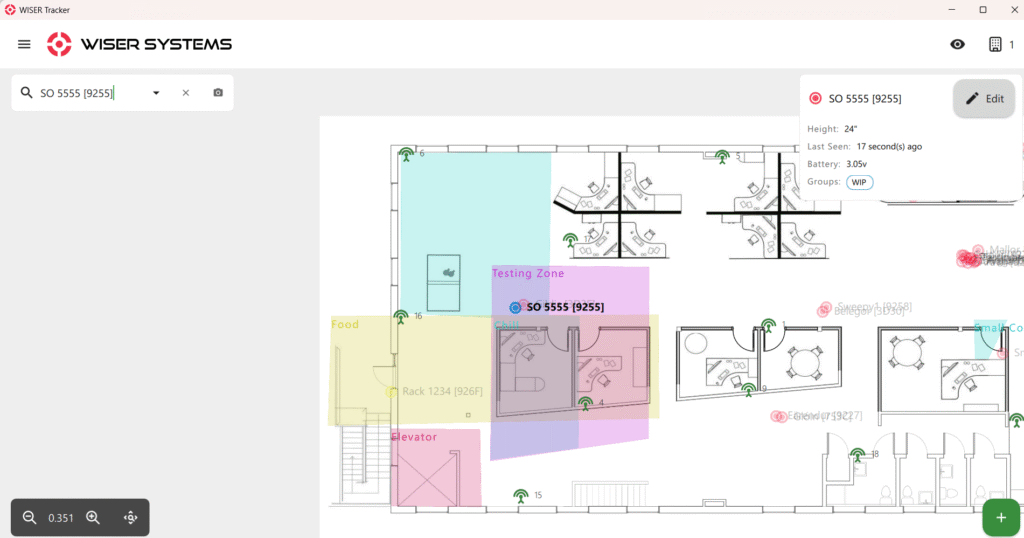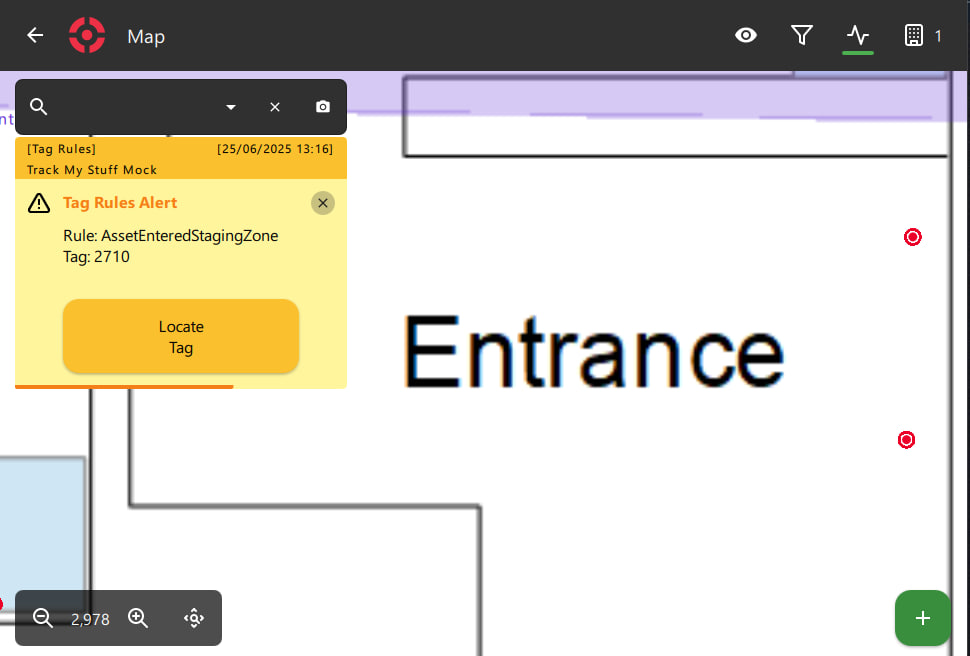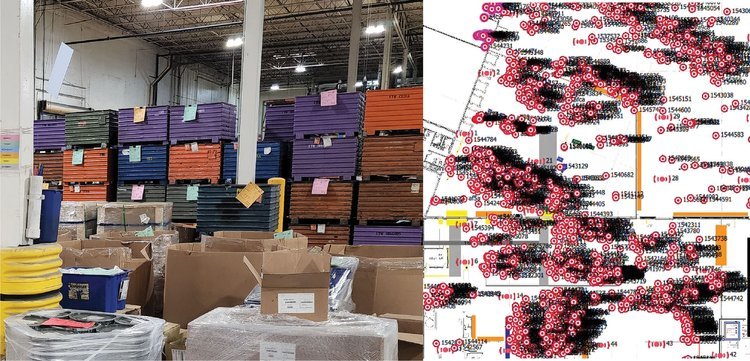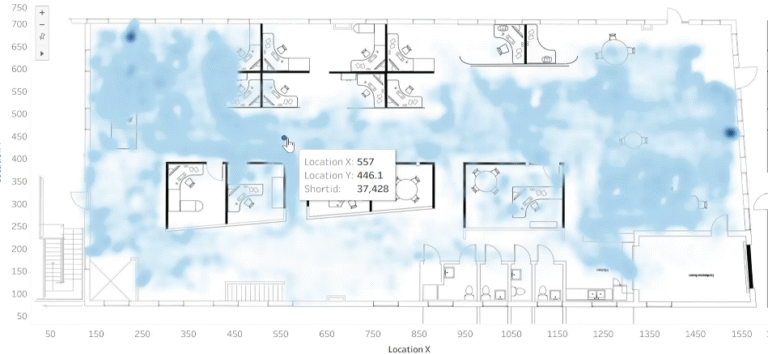In many manufacturing environments, the movement of Work-in-Progress (WIP) is one of the least visible yet most critical aspects of production. Whether a facility is building industrial machinery, assembling electronics, or processing custom components, WIP materials often spend more time waiting or moving than actually being worked on.
By nature, WIP involves multiple moving parts, both literally and organizationally. Managing that complexity presents major challenges: forecasting product completion, maintaining the right balance of inventory, and preventing loss or damage along the way.
Manufacturers use a variety of tools to manage WIP, from clipboards and spreadsheets to specialized software or dedicated tracking hardware. This is where Real Time Location Tracking and WISER’s RTLS and zone-based alerts can make a measurable difference.
What is RTLS?
Real-Time Location Systems (RTLS) are technologies that automatically track the real-time location of objects or people, especially within indoor environments like factories, warehouses, and yards. RTLS solutions typically use tags or transponders attached to assets (such as carts, tools, or WIP) along with a network of fixed readers or sensors to detect and report their positions. RTLS, particularly those using Ultra-Wideband (UWB) technology, provides high accuracy that is often within a meter and enables precise, real-time visibility of materials and movement within a facility.
In manufacturing, RTLS enables teams to:
- Monitor flow across departments or stations
- Eliminate wasted time searching for assets
- Detect delays, congestion, or misrouted work
- Improve process stability and responsiveness
It can also automate or supplement error-prone manual processes such as scanning or logging, especially in environments where scanning is impractical due to layout constraints, time pressures, or the high volume of movement.
How WISER Adds Value
It is important to note that WISER’s solution is uniquely suited for the manufacturing environment. Because RTLS provides real-time tracking 24/7 of any tagged asset, it is like a continuous barcode scanner of every tagged item. Supervisors and Operators can always look up the current or past locations of any item.
By using UWB technology, the WISER system maintains accuracy even in reflective metal environments. The hardware and software were designed with the manufacturer in mind to be affordable to purchase and maintain, and to be simple to use for the plant managers and the machine operators. The software package has many features, such as straightforward tag assignment and re-assignment, easy grouping, and zone alerts that address the unique needs of factories that are high-mix, carry a large amount of WIP, or have testing flows with re-work loops.
Real-Time Search: Reducing Time Spent Hunting for WIP

Image: WISER App highlighting location of SO5555 and in upper right showing details on its group
A common source of waste in WIP-intensive processes is the time lost searching for parts, carts, tools, or subassemblies. For example, in many operations carts are staged in unintended locations, batches move too early or too late between steps, or high-priority jobs are misplaced or delayed. Just finding lost stuff can waste a huge amount of time, and if not found in a reasonable period, can require reordering of parts or re-manufacturing of WIP.
WISER offers a simple search and find tool. Once an item is tagged, it can be assigned to a workorder, the name of a piece of equipment or tooling, a kit, etc. Using the WISER App, a worker can simply type in that work order number or an identifier for that piece of equipment and the App will immediately show where the item in question is on your floor plan. With WISER’s real-time search, teams can instantly locate any tagged WIP item across the facility. They can also filter by part type, job ID, or cart number, and conveniently access location data from their desktop or mobile devices that are Windows, Android, or Apple-based.
This visibility reduces disruption and avoids production delays caused by misplaced materials. In the longer term, it builds operational confidence, and enables more informed, faster decision-making.
Zone Alerts: Detecting Flow Disruptions Early

Beyond locating specific items, WISER’s zone alerting lets teams monitor flow conditions in defined areas, such as, workstations, staging zones, or inspection points. Setting up Zones is a straightforward process using the WISER Zone tool. With the floorplan open, the user opens the zone tool and simply clicks the pointer around the desired zone, names the zone, and saves. Zones can be any shape, overlap, and changed at any time.
Once those zones are created, the WISER App includes a basic rules function so that users can create alerts based on entry or exit to a zone and time spent in a zone. Automating these alerts based on the real time location of items can drastically simplify floor management for supervisors. Configurable alerts notify supervisors when a job remains in one zone longer than expected, assets appear in unauthorized or unexpected locations, or flow between stations slows or becomes uneven
It’s easy to see where having this information in real time can reduce the buildup of unwanted WIP, lost jobs, or misplaced carts. Users interested in leveraging more from this real-time data can use it to support functions such as:
- Automatically signaling when a job is ready for the next step
- Preventing overflow in staging or inspection zones
- Detecting early signs of production slowdowns or WIP loss
Even basic dwell-time alerts help supervisors act quickly to keep work moving and avoid costly stagnation or overproduction.
Use Cases in WIP-Driven Environments
Companies using WISER’s RTLS for WIP tracking have found measurable gains in a range of environments:
- Fabrication Shops: Work orders that are sometimes consigned inventory are tracked through complex processes that vary from order to order so jobs stay on time and customers can immediately be informed about job statuses
- Test & Inspection Areas: In high-regulation industries where sub-assemblies are tested through manufacturing, item entry into a testing zone will notify quality control teams or flag delays in post-test movement.
- High-Mix Production: Operators can prioritize work based on real-time dwell time, urgency, or location.
These are just a few areas where an RTLS solution like WISER’s can make a huge difference in production efficiency and also customer satisfaction.
Example: Tracking Complex, Flexible WIP Flows

Image: SWD site with stacked bins of items to be finished (Left); WISER view showing location of all work orders (Right)
WISER’s RTLS is especially effective in cell-based or high-variability manufacturing environments, where jobs may follow different routes, skip stations, or repeat steps based on unique customer requirements. In these scenarios, traditional tracking methods break down quickly and the risk of lost inventory, delays, or misrouting rises sharply.
Take SWD, Inc., a WISER customer that finishes customized metal parts. On any given day, they may process hundreds of unique orders—metal plates, specialty bolts, springs, and more. Because jobs follow custom routes and vary in sequence, real-time tracking of thousands of active work orders is critical to their ability to stay efficient and meet customer timelines.
In the SWD case, when customer orders reach the facility, each job is assigned an order which is linked via barcode to a WISER tag that is attached to the paper rider that will move with the job. That is the one and only barcode scan required for that job. And that barcode scan pairs the real-world consigned inventory to be finished with the digital requirements for the work order.
At any point in the processing of that work order, supervisors can look up its current location and have the ability to check what steps it has completed through the process. They can better plan work-station management day by day and also be more responsive to customer requests.
Once complete and before the order goes out for shipment, the paperwork is checked as complete, the tag is removed for later reassignment, and the cycle can begin again at the entry dock. WISER’s solution gives SWD a clear, real-time picture of every active job without relying on barcode scans, manual logs, or fixed routing.
WIP Visualization without Added Complexity
In any WIP process improvement exercise, one of the biggest challenges is visualizing the actual state of your operation in real time, without filters or delays. By making it easier to see WIP, detect delays early, and understand flow as it happens, an RTLS system like WISER’s helps teams recover time, reduce waste, and make smarter decisions. WISER’s platform offers a low-friction way to improve processes without requiring complex IT integrations or retraining frontline workers.
Whether you’re just starting a journey to improve your management of WIP or refining a mature system, real-time visibility into WIP is a powerful enabler.



